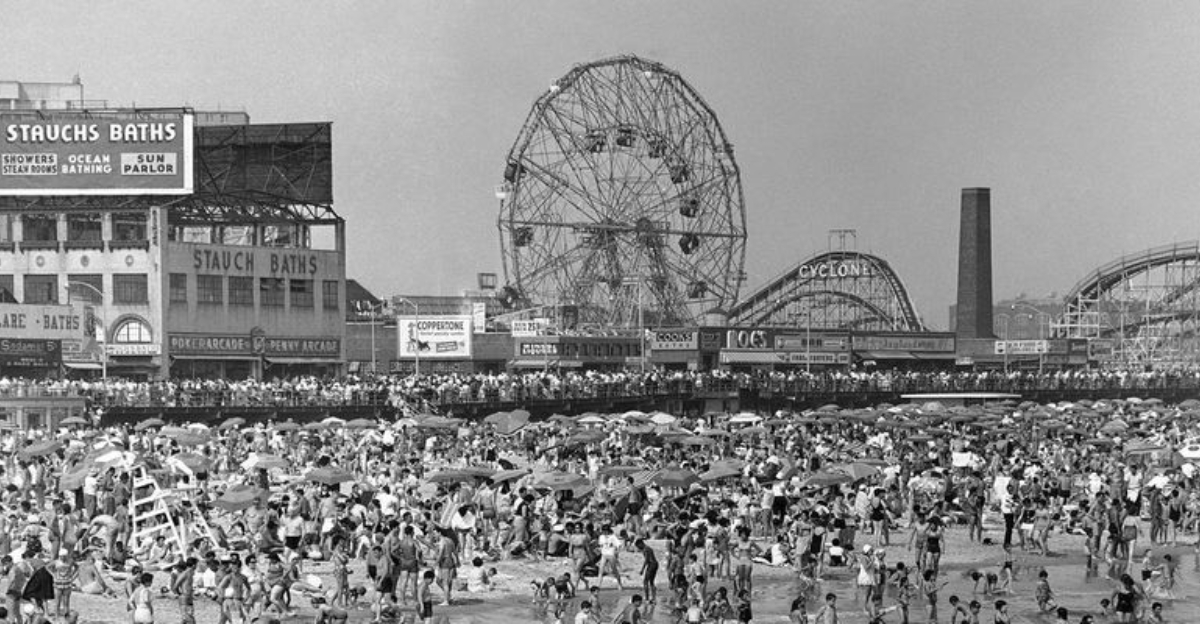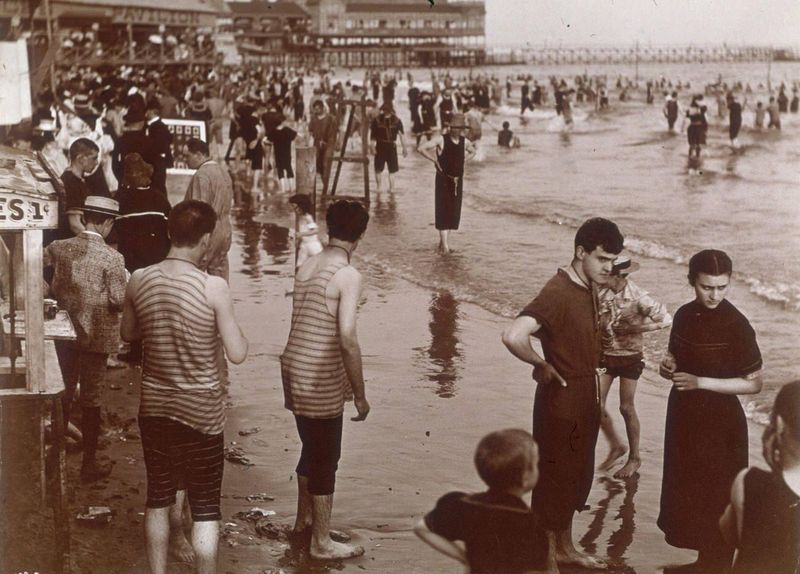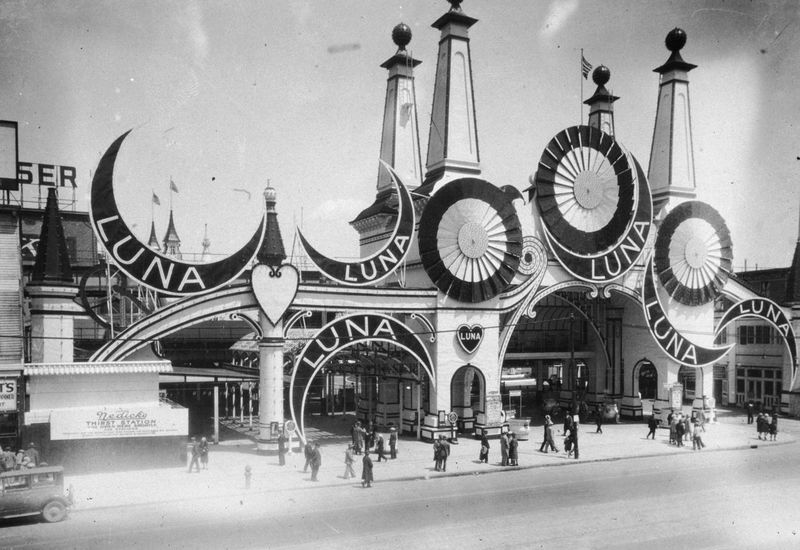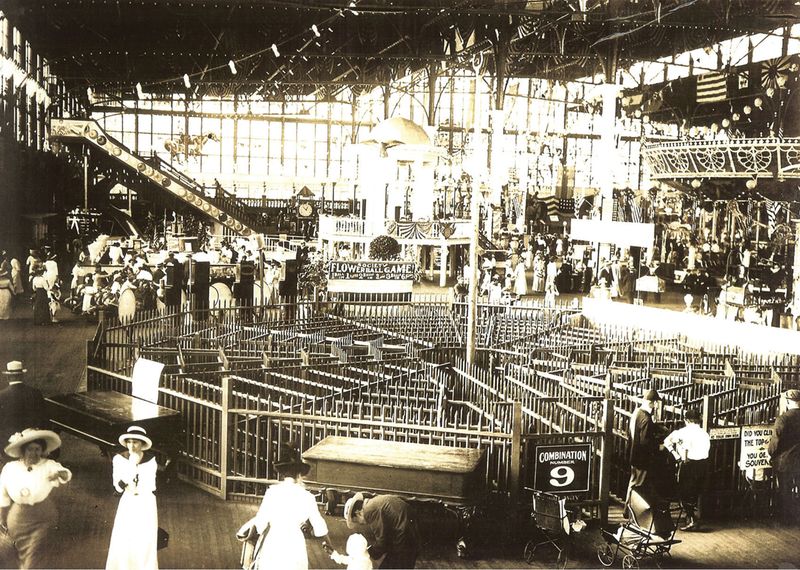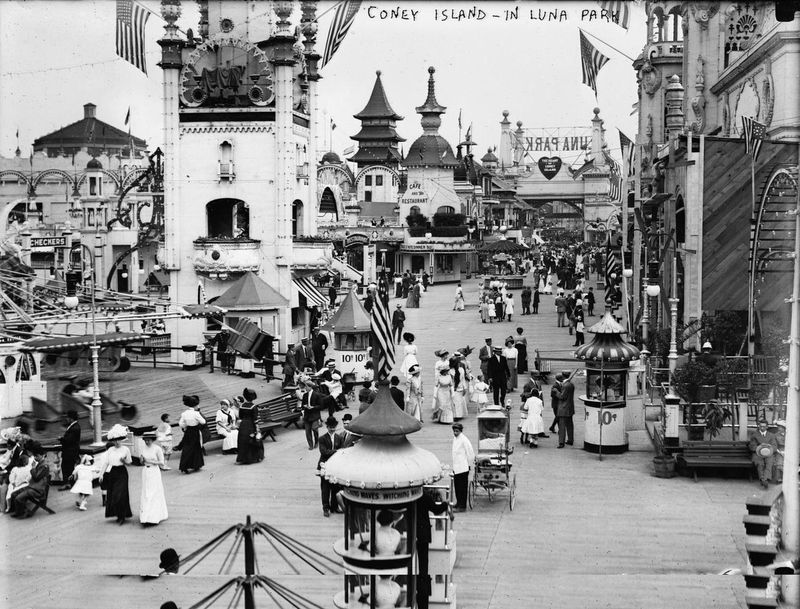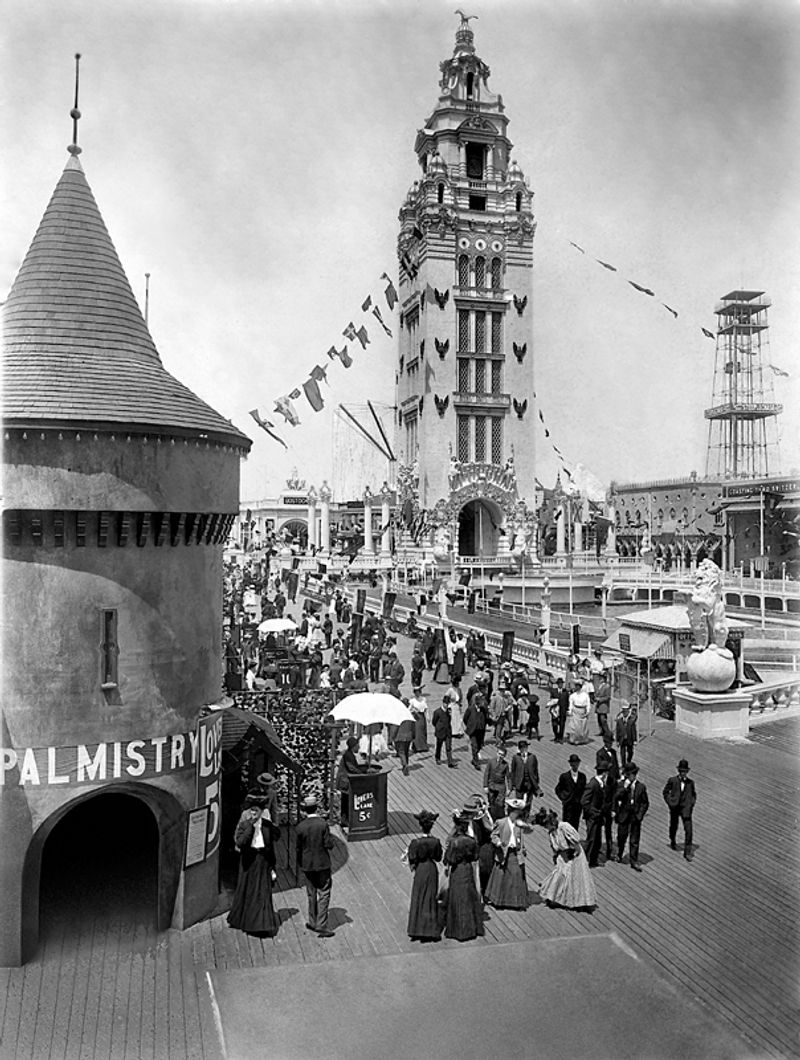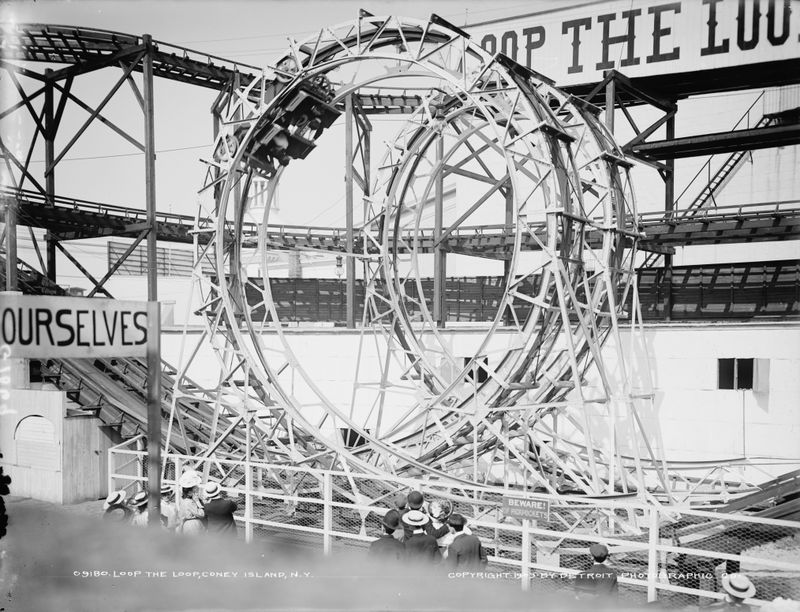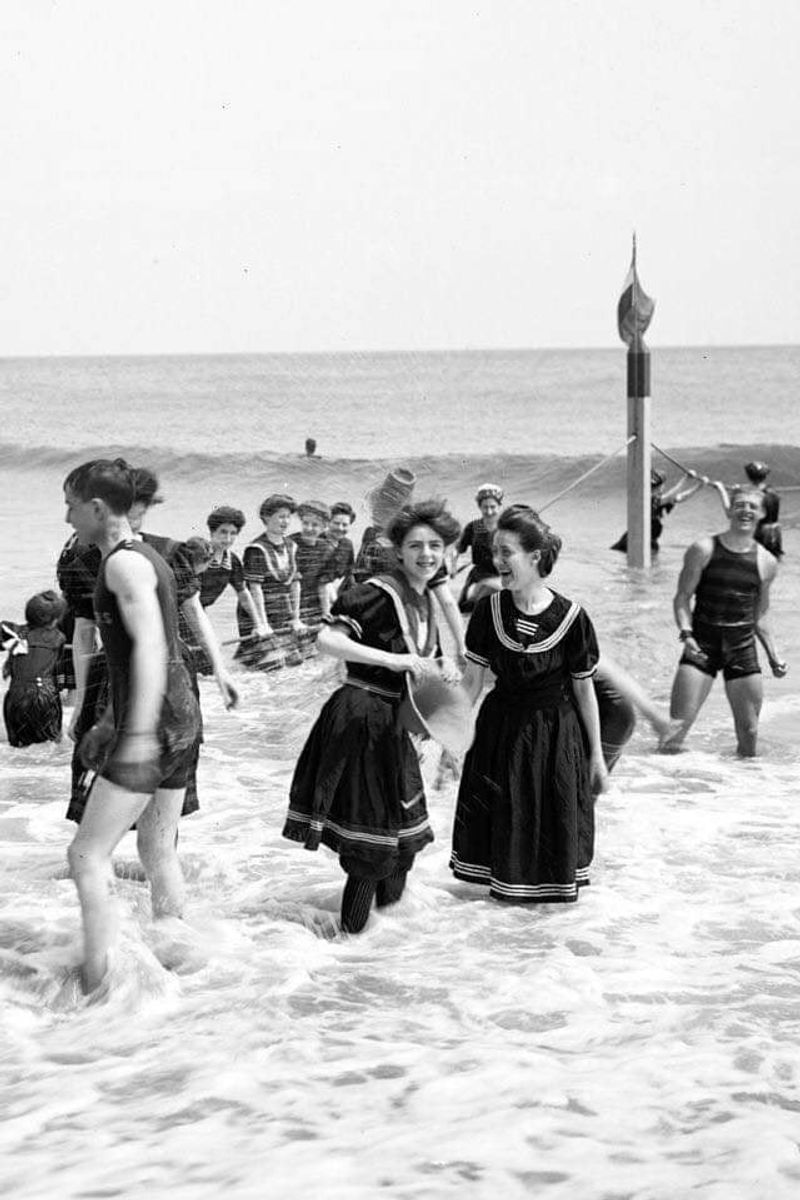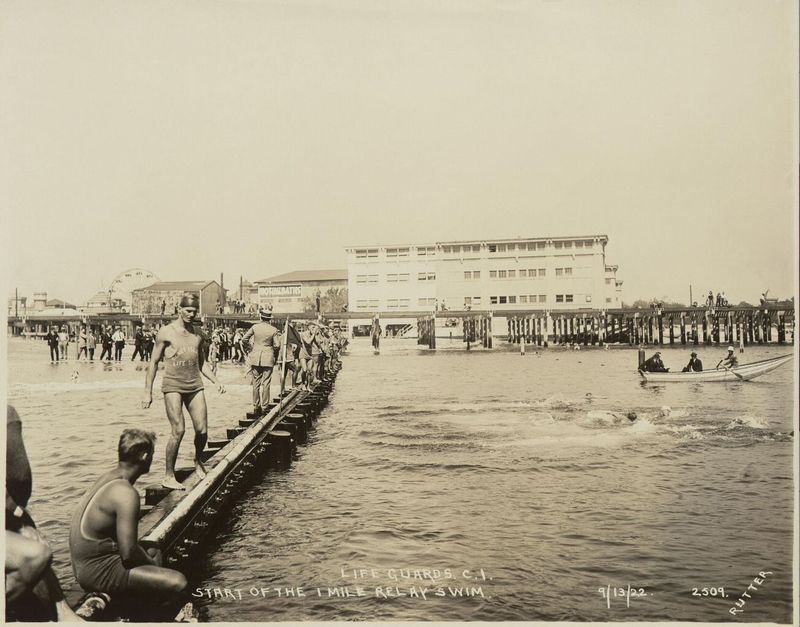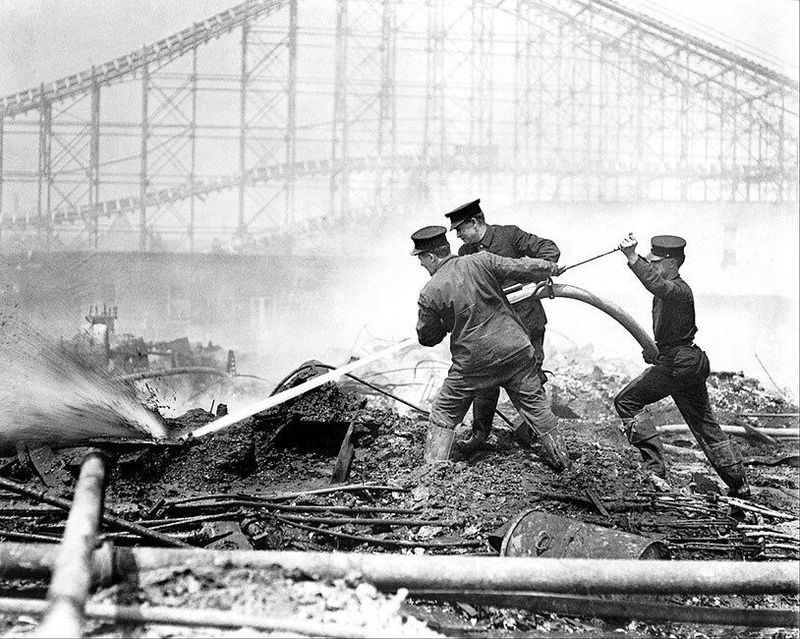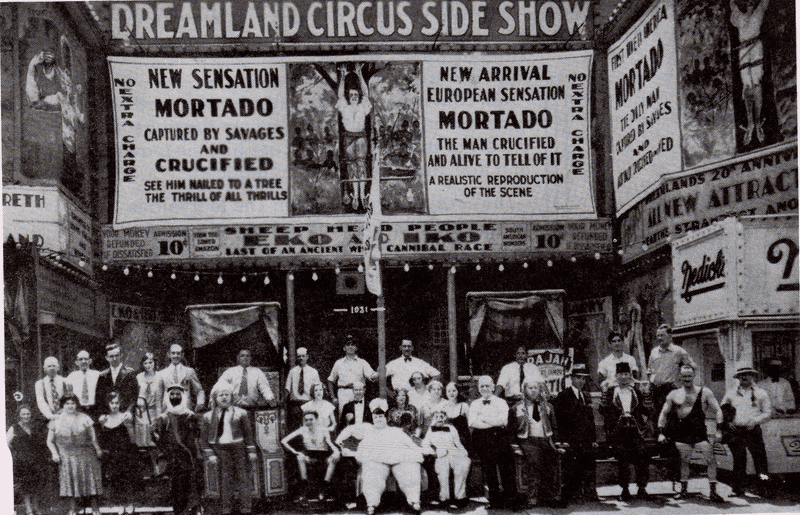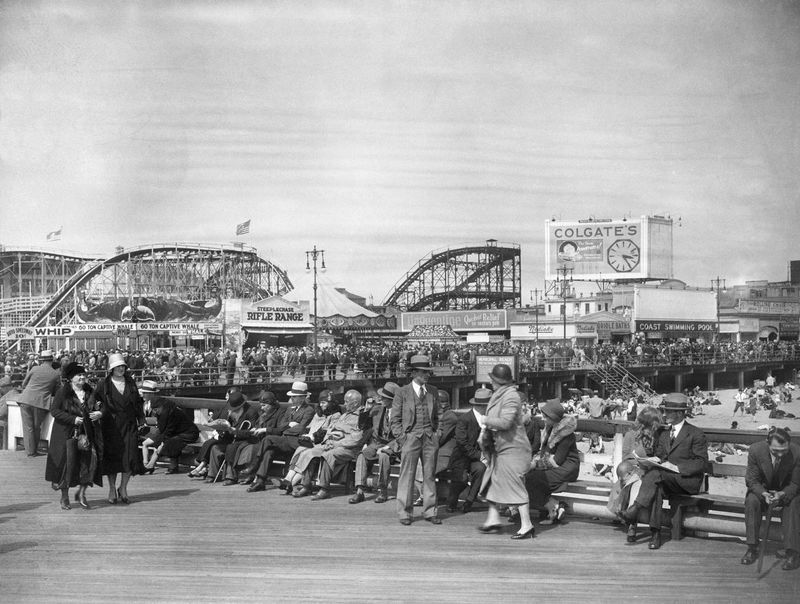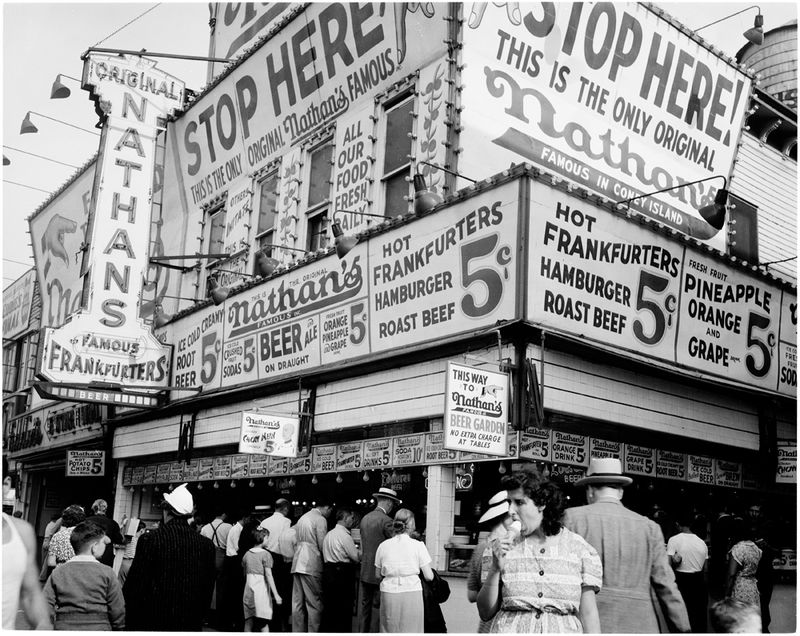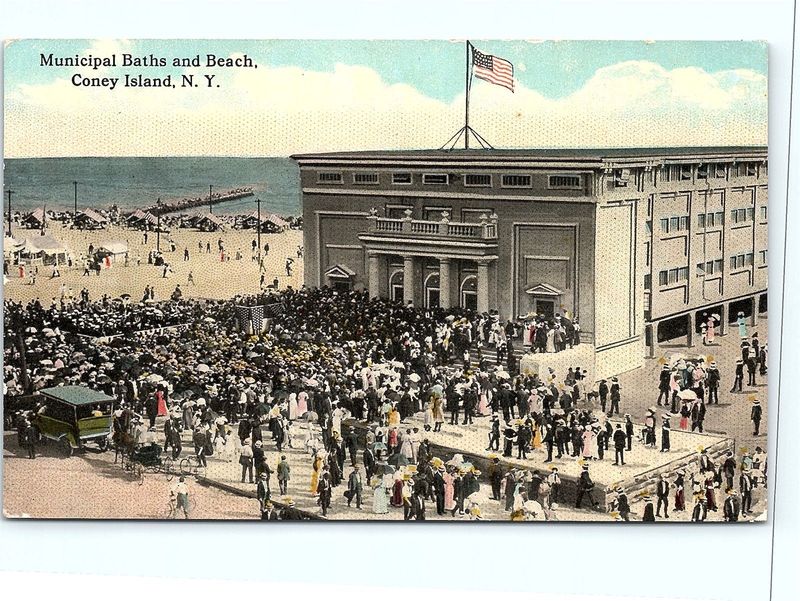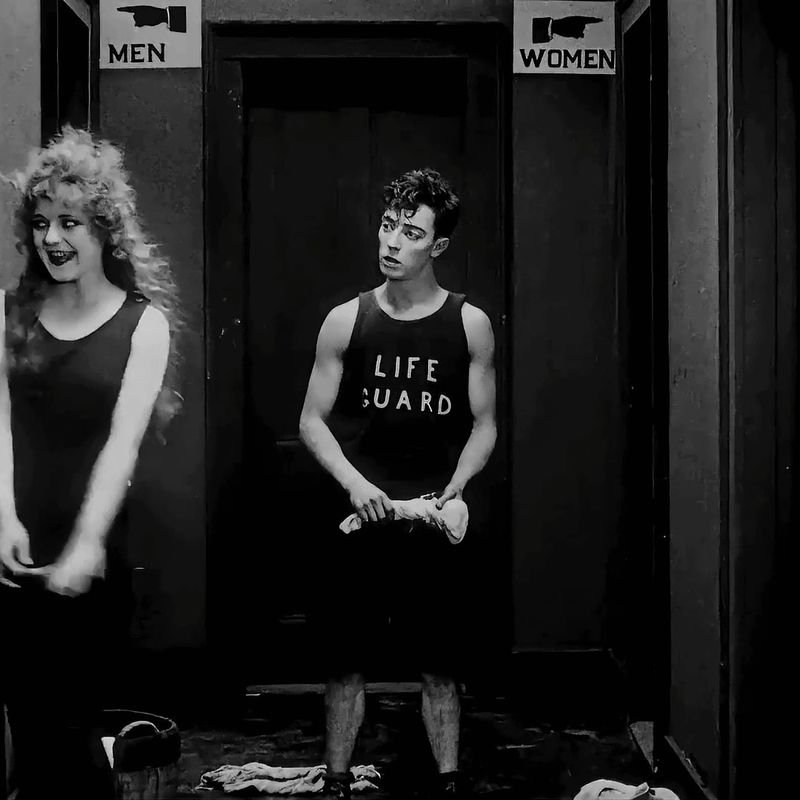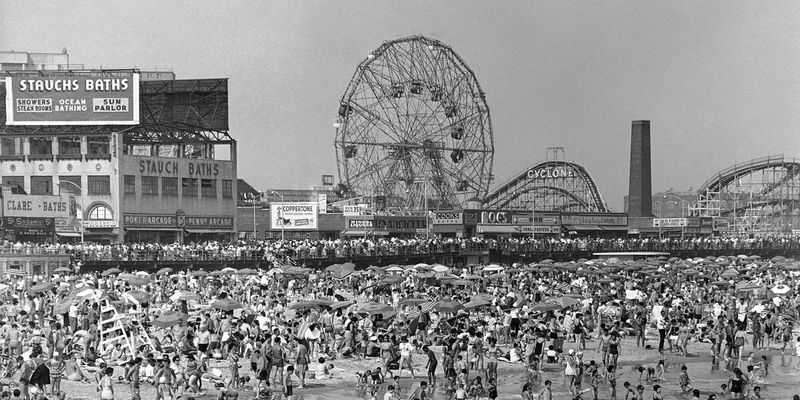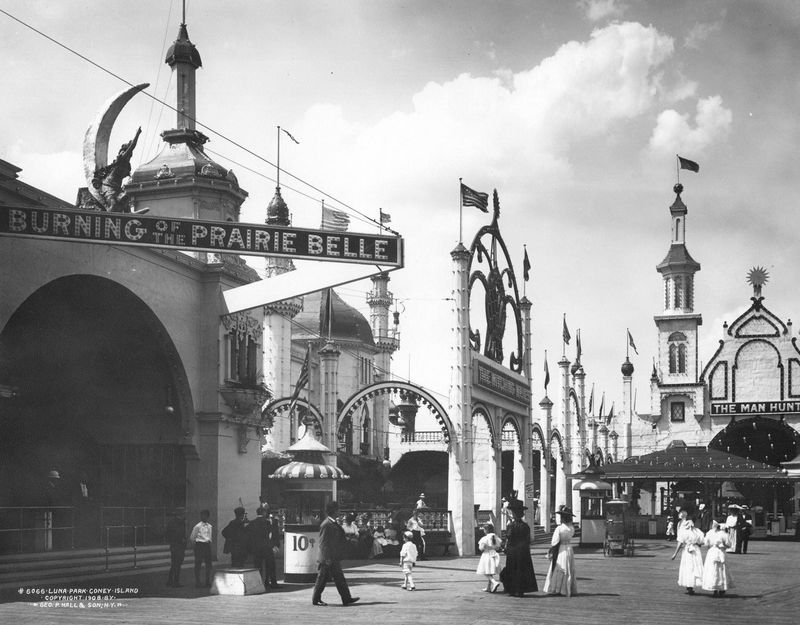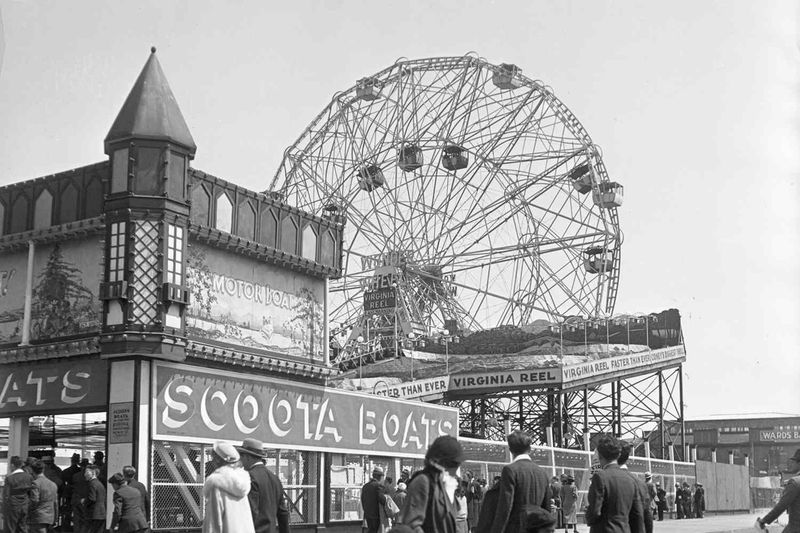Coney Island isn’t just a beach — it’s a legend. In the late 19th and early 20th centuries, it transformed from a quiet barrier island off Brooklyn into the nation’s most iconic playground. These 18 photos aren’t just snapshots; they open a window into a lost era when Coney Island reigned as America’s premier escape.
1. A Beach Like No Other (1890s)
By the 1890s, Coney Island’s beaches were a marvel, drawing crowds eager for sea breezes and sun — a new phenomenon as “bathing” for leisure became fashionable. The sandy shores were alive with vibrant parasols and bustling families seeking respite from city life. This era marked a cultural shift, as people embraced the joys of beachgoing, transforming Coney Island into a bustling seaside haven.
2. The First Amusement Parks (1895)
Coney Island made history with Sea Lion Park in 1895, the nation’s first enclosed amusement park, introducing the idea of paying a single fee for multiple rides. Families marveled at the mechanical wonders, from the exhilarating rides to whimsical shows, forever changing how America spent its leisure time.
3. Steeplechase Park: The Laughter Capital (1897)
Steeplechase Park, opened by George C. Tilyou, emphasized “fun for the masses” with rides like the Human Roulette Wheel and the Mechanical Horse Race. The park’s lively atmosphere was infectious, as visitors laughed and cheered, creating memories that would last a lifetime.
4. The Birth of the Boardwalk (Early 1900s)
The boardwalk wasn’t just for walking; it was a stage for fashion, flirtation, and freedom — a rare democratic space where classes mingled. The wooden planks echoed with the sounds of laughter and conversation, as people from all walks of life enjoyed leisurely strolls by the sea.
5. Luna Park Lights Up (1903)
With over a million electric lights, Luna Park transformed nighttime entertainment, making Coney a beacon seen from miles away. The dazzling lights created an enchanting atmosphere, drawing visitors into a world of wonder and excitement with every twinkling bulb.
6. Dreamland: Where Fantasy Came to Life (1904)
Dreamland took spectacle to new heights with attractions like “Hell Gate” and “Lilliputian Village,” offering daring thrills and fantasy worlds. It was a place where imagination knew no bounds, captivating the hearts and minds of its visitors with its extraordinary offerings.
7. Thrilling Rides Emerge (1900s)
Innovations like the Loop-the-Loop coaster and Shoot-the-Chutes water ride pushed the limits of thrill-seeking. These pioneering rides offered adrenaline-pumping experiences that thrilled visitors, setting the stage for the future of roller coasters and amusement attractions.
8. Bathing Suit Battles (1900s)
At a time when “revealing” meant showing ankles, Coney’s beachgoers pushed social norms, leading to regular “Bathing Suit Patrols.” This playful tension marked a cultural shift towards more relaxed social mores, with Coney Island at the forefront of change.
9. Immigrants Find a Playground (Early 20th Century)
For many new Americans arriving through Ellis Island, Coney Island offered their first taste of leisure and wonder in their new country. Families found joy and connection amid the bustling attractions, feeling a sense of belonging in this vibrant melting pot.
10. The Great Fire of Dreamland (1911)
Tragedy struck when a devastating fire destroyed Dreamland overnight, but the spirit of Coney endured. The community’s resilience shone through, as people rallied together to rebuild and keep the dreams alive amid the ashes.
11. Sideshows and Curiosities (1910s)
Coney’s midway was packed with sword swallowers, strongmen, and “human oddities,” blending wonder with the bizarre. These sideshows captivated audiences, offering a thrilling glimpse into the extraordinary and the unusual.
12. The Roaring Twenties Arrive (1920s)
Postwar prosperity supercharged Coney Island, with new rides like the Wonder Wheel (1920) and the Cyclone (1927) cementing its reputation. The Roaring Twenties brought an explosion of energy and innovation, with Coney Island at its vibrant heart.
13. Food, Glorious Food (1920s)
Hot dogs at Nathan’s Famous, opened in 1916, became as iconic as the rides, symbolizing Coney’s grab-and-go spirit. The savory aromas of street food filled the air, enticing visitors with a taste of Coney’s culinary delights.
14. The Rise of Bathhouse Culture (1920s)
Public bathhouses offered lockers, showers, and even social spaces, making beachgoing accessible to all. These facilities provided comfort and convenience, enhancing the overall Coney Island experience for visitors of all backgrounds.
15. Coney’s Role in Early Film (1910s-1920s)
With its colorful characters and chaotic energy, Coney Island became a favorite backdrop for early silent films and slapstick comedies. Filmmakers were drawn to its lively atmosphere, capturing the spirit of the times on celluloid.
16. Nickel Empires: Penny Arcades and Games (1920s)
Before video games, visitors flocked to penny arcades for mechanical games, fortune tellers, and photo booths. These nickel empires offered endless entertainment, sparking joy and curiosity in every playful corner.
17. Coney as the “Poor Man’s Paradise” (1920s)
Even amid economic divides, Coney Island offered affordable thrills, living up to its nickname as the “people’s playground.” It was a place where everyone could indulge in joy and wonder, regardless of wealth or status.
18. A Symbol of American Leisure (By the Late 1920s)
By the end of the 1920s, Coney Island wasn’t just a destination; it was an institution, influencing the very idea of mass entertainment in America. Its legacy as a symbol of leisure and fun remains etched in the annals of history.
